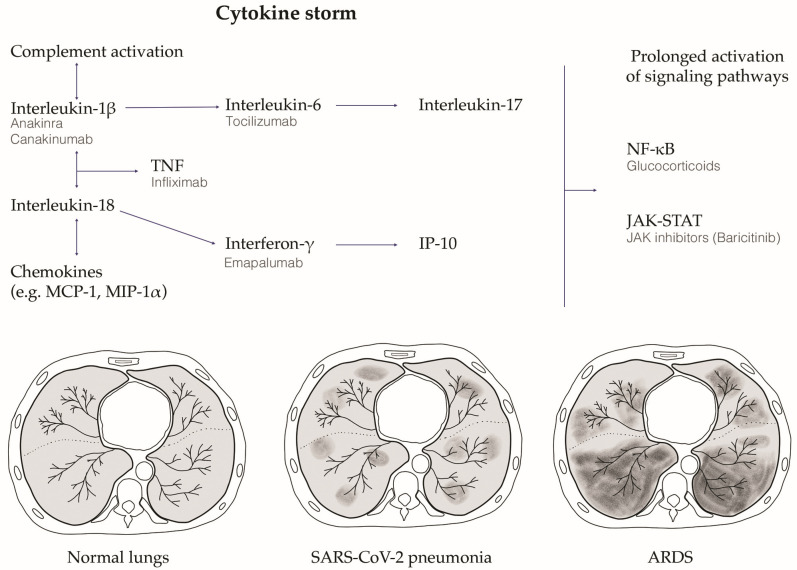Figure 2.
The SARS-CoV-2 infection induced cytokine storm and the relative lung damage. After SARS-CoV-2 infection, an innate and adaptive immune response is activated, which leads to the release of high amounts of pro-inflammatory cytokines (the cytokine storm schematically reported in the figure). This process clinically manifests first with respiratory failure and interstitial pneumonia, which are typically characterized by diffuse ground glass opacifications detected using high-resolution computed tomography. The more this process auto-amplifies, the higher is the risk for the patient to develop acute respiratory distress syndrome (ARDS) and multiorgan failure, which can finally lead to death. The figure schematically depicts axial slices from high-resolution computed tomography (HRCT) showing normal lungs, SARS-CoV-2 interstitial pneumonia with the typical ground glass opacifications, and the end-stage ARDS. Therapeutic strategies experimented in COVID-19 targeting the cytokine storm pathways are also depicted. TNF, tumor necrosis factor; NF-kB, nuclear factor kappa B; JAK-STAT, Janus kinase—signal transducers and activators of transcription; Monocyte Chemoattractant Protein-1, MCP-1; Macrophage Inflammatory Protein-1 Alpha, MIP-1 alpha; Interferon gamma-induced protein 10, IP-10.

